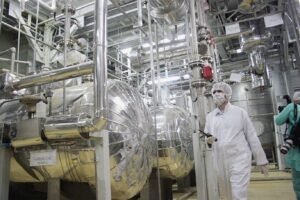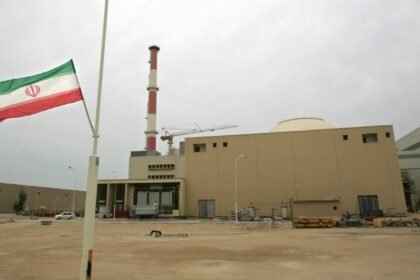Florida, United States – The US Navy announced on Tuesday the implementation of a series of tests of Trident II D5 intercontinental ballistic missiles.
These missiles were launched from a submarine off the eastern coast of Florida.
The US Navy indicated that these tests are “pre-scheduled” and are not linked to any current global developments or events.
The Navy said in an official statement that the tests took place between September 17 and 21.
Night launches
These tests included carrying out 4 missile launches from submarines.
This is within the framework of ensuring the “readiness and reliability” of the United States’ strategic nuclear arsenal.
The Navy confirmed that one of the night rocket launches was visible from Puerto Rico, where it lit up the sky in a striking scene.
She added that these tests are part of a periodic training program aimed at testing the combat capabilities of nuclear submarines.
The statement explained that the missiles were launched from a submarine stationed underwater, and fell in a designated area in the Atlantic Ocean.
Pilots and sailors were warned in advance against entering, in compliance with approved safety procedures.
Commenting on these tests, Vice Admiral Johnny Wolf, Director of Strategic Systems Programs at the US Navy, said: “The submarine-launched ballistic missile system has been one of the pillars of US national security since the 1960s, and these systems continue to prove their effectiveness and credibility as an element of strategic deterrence”.
These maneuvers come at a time when the region is witnessing escalating political tensions, especially with the escalation of tensions between the United States and Venezuela.
However, US officials stressed that these tests have nothing to do with these developments.
What are Trident ballistic missiles?
- The Trident missile is a submarine-launched ballistic missile (SLBM) equipped with multiple independently targetable re-entry vehicles (MIRV).
- Originally developed by Lockheed Missiles and Space, the missile is armed with thermonuclear warheads.
- Trident missiles are carried by twelve US Navy Ohio-class submarines, with US warheads, as well as four Royal Navy Vanguard-class submarines, with British warheads. The rocket is named after the legendary Neptune Spear.
- Trident’s first test was conducted on January 18, 1977, when it launched an unarmed rocket from Cape Canaveral, Florida, covering a distance of approximately 7,400 kilometers, equivalent to 4,600 miles, to a point in the South Atlantic Ocean near Ascension Island.
- Trident 1, referred to as C4, was published in 1979 and retired in 2005. Its goal was to achieve performance similar to that of Poseidon (C3) but at a longer scale.
- Trident 2, referred to as D5, aimed to improve the accuracy of potential circular error (CEP). It was first deployed in 1990 and was scheduled to remain in service for the submarines’ thirty-year lifespan, until 2027.
- The total cost of the Trident program to date was $39.546 billion in 2011, at a cost of $70 million per missile.
- In 2009, the United States modernized warheads carried by US D5 missiles with an armament, detonation, and launch (AF&F) system called a “super fuse” that allows them to time their detonation to target silos and bunkers more accurately, greatly increasing their effectiveness against fortified targets.

















